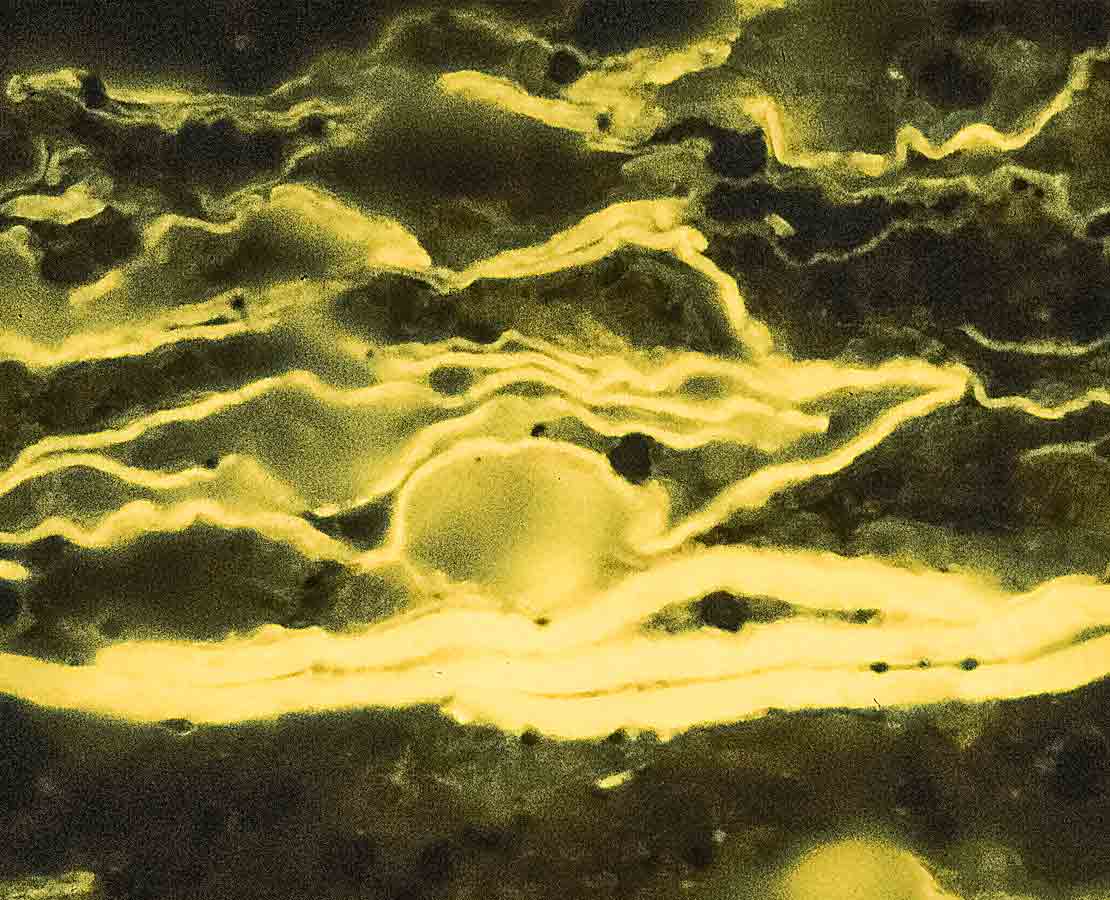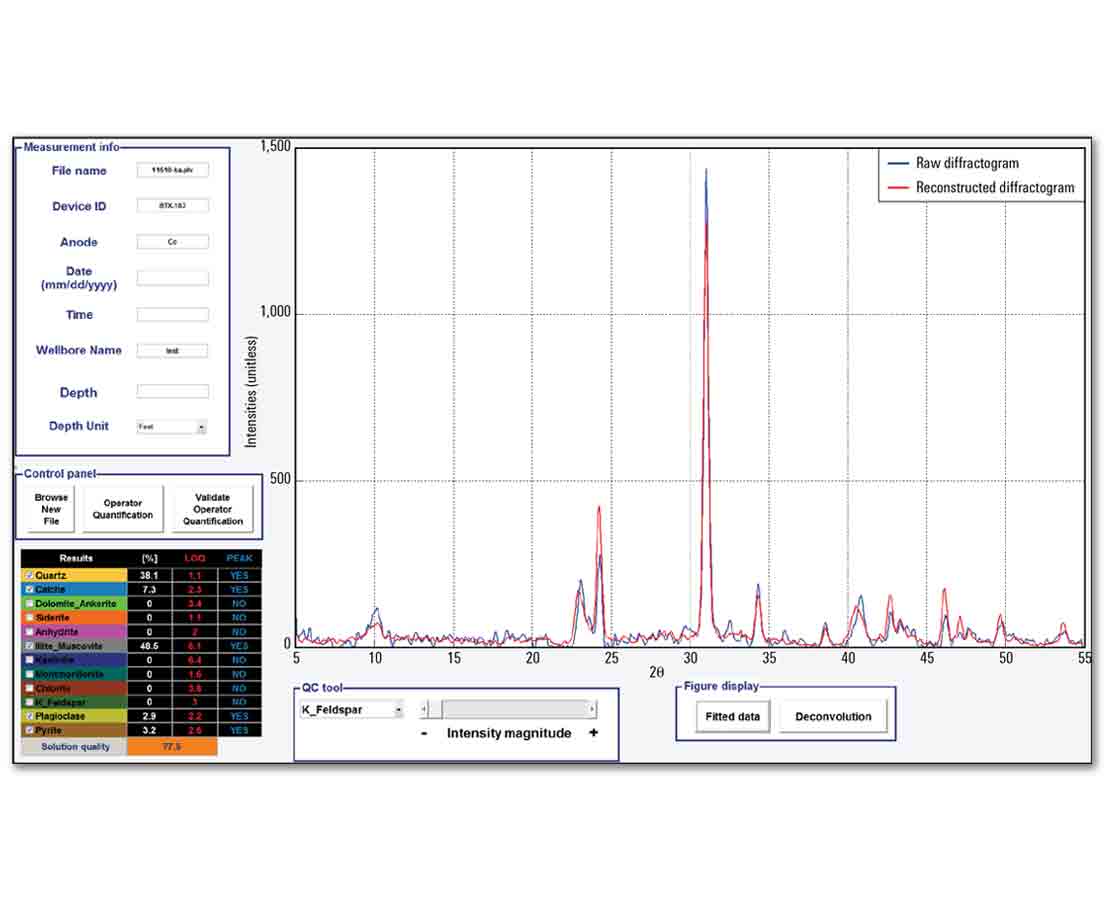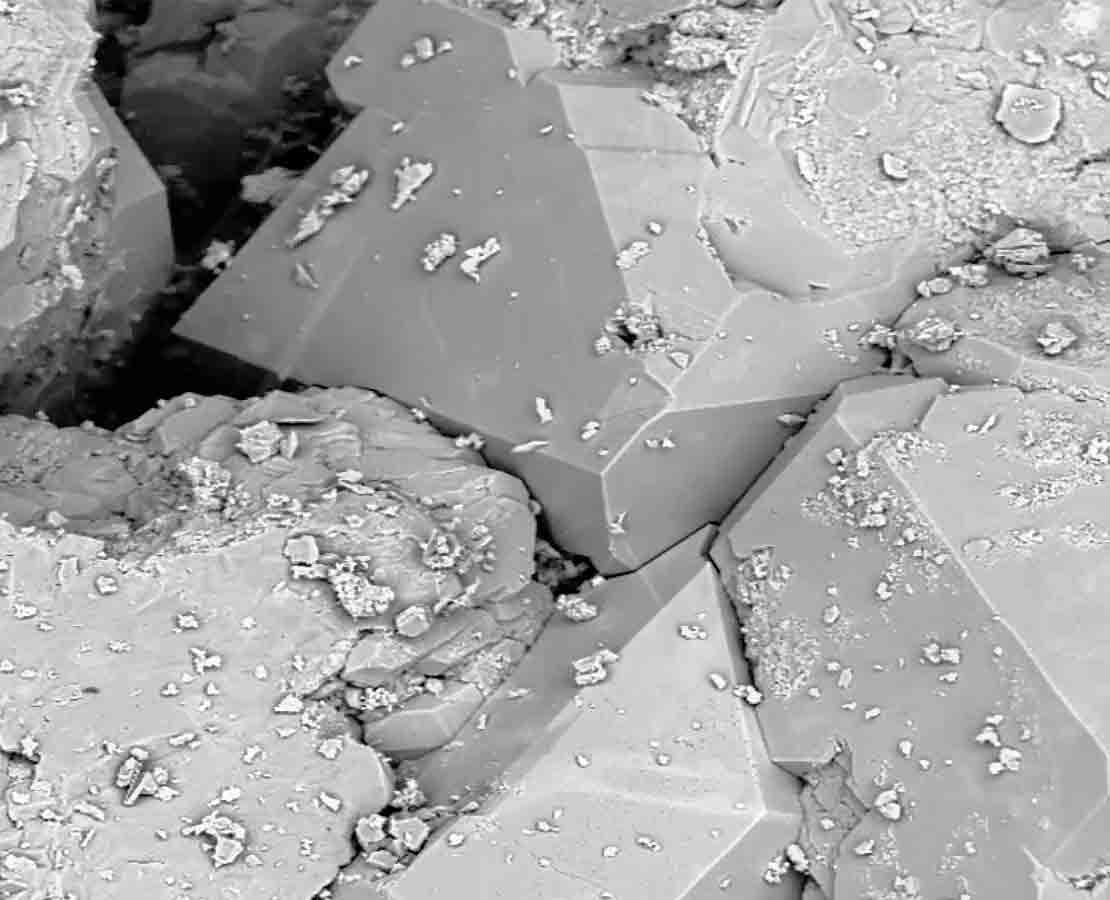Petrology Services
Detailed evaluation of rock texture and composition


Detailed petrologic evaluation of selected samples can be used to construct sedimentologic, organic, and diagenetic facies, adding information that is critical to geological conceptualization and modeling.
Direct rock measurements lead to more accurate interpretation of log data and provide certainty for core-based modeling.
Core description
The foundation for multiwell geologic models, core description produces stratigraphic and geologic information used for interpretation of depositional environments, diagenetic transformations, and fracture identification. This information provides a framework for linking other measurements and developing scaling relationships for petrologic evaluation.
X-ray diffraction (XRD)
Semiquantitative bulk and clay XRD determines mineralogy, clay type, and clay abundance. Results are reported as bulk mineralogy and clay-weight percent, individual clay species, and percent expandability. These data are vital to diagenetic studies, facies analysis, log calibration, and prediction of fluid sensitivity. Measurements are critical for the proper evaluation of shale plays.
Fourier transform infrared spectroscopy (FTIR)
FTIR provides the bulk mineralogy and concentrations of both crystalline materials and amorphous phases in rocks and other solid phases. Dual-range FTIR (merged mid-infrared and far-infrared spectra) is especially useful in distinguishing between different types of hydroxyl and hydrous phases, opaline and paracrystalline silica phases, order of kaolinite clays, and micas versus illite clays.


X-ray fluorescence (XRF)
Elemental analysis of major, minor, and trace elements in rock material across the entire borehole is conducted through XRF.
Laser particle size analysis (LPSA)
LPSA determines grain size, distribution, and sorting of sand- and clay-sized material.
Thin sections
Description of thin sections includes lithotype classification, description, examination with plane and ultraviolet light, and two digital images for mineralogical and textural characterization.
Scanning electron microscopy (SEM)
Argon-ion milled backscatter SEM imaging illustrates 2D compositional and textural differences for evaluation of refined pore distribution. The method supplements information derived from secondary-electron SEM analysis.
